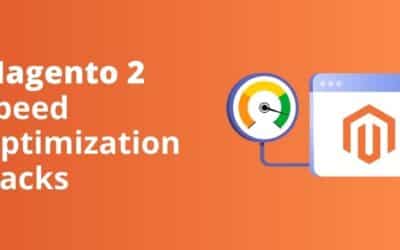Summary of the Article
Have a project in mind?
Schedule a Call12 common challenges while migrating Magento 1 to Magento 2
Summary of the Article
Magento 2 heralded the end of Magento 1. Since the current version of the leading e-commerce platform differs significantly from its predecessor, Magento 2 upgrade projects cannot be compared to a classic release change and are associated with corresponding efforts. On the other hand, Magento 2 offers a lot of advantages over Magento 1.
For Magento 1 shop operators, the question is – When is the right time to switch, and what are the advantages and disadvantages of the upgrade?
With the introduction of Magento 2 into the e-commerce market, Magento opened a new chapter for its leading commerce platform. Technologically modern and completely revised in architecture, Magento 2 is less a successor to Magento 1 than a new product that will completely replace its predecessor in the medium term.
Magento 1 will stop providing security updates and patches from June 2020, therefore Magento 1 users should consider switching as soon as possible in order to keep their shop stable and future-proof.
It should be assumed that Magento 2 is not a further development of Magento 1. The architecture of the leading open source e-commerce platform has been completely revised in large parts.
A simple release change, as was possible with the previous versions, is excluded. 3rd party extensions, templates, etc. cannot easily be transferred to the new system. Magento 2 upgrades are de facto platform migration projects.
There is no general answer as to when the upgrade makes sense since the situation is different for each shop operator and has to be considered depending on time, technical, or budgetary aspects.
The technical aspect
There will be no further developments with a Magento 1 version. So if you need new features or major modifications for your shop, you are well-advised not to have them developed in their existing version.
Thanks to the integration of modern technologies such as HTML5, PHP7, JQuery, Varnish 4, and the stronger modularization based on the Zend Framework, developers can provide new functionalities for Magento 2 shops faster and easier.
In addition, additional features are also available in the form of extensions in the Magento Marketplace, which now contains thousands of items for Magento 2.
Performance and scalability are also possible reasons for a change. Magento 1, especially in large shops, was very resource-hungry and slow in terms of response and loading times, these problems have been solved thanks to the new architecture.
Thanks to the integrated full page cache, Magento 2 offers excellent performance. Shop pages are delivered up to 50 percent faster than shops based on Magento 1.
As a result, a performance increase of around 25% and noticeably improved user and shopping experience can be recorded with the same hardware setup.
So if your shop suffers from performance problems, a switch Magento 1 to Magento 2 could quickly pay for itself with more transaction volume.
The time factor
For medium-sized shops or for those that have individual adaptations and features, a migration period of 5-6 months should be taken into account. For large or highly individual shops, this project period can also extend to 8-12 months.
In order to make such estimates concrete, it is crucial to carry out a detailed analysis of the shop and the existing system landscape in order to identify individual adaptations and extensions and then to replace them with equivalent Magento 2 extensions or to develop them.
Magento has developed appropriate migration tools to shorten project times – but a large part of the shop must be rebuilt from scratch. For all those who need a fast time-to-market solution, the Magento cloud solutions are recommended. Basic shops that are close to the standard can be released in a period of 10-12 weeks.
Another expenditure of time is the selection and utilization of suitable migration partners. The migration of a shop is a complex task that requires the support of a Magento Solution Partner, the number of which is rather manageable in the DACH market.
As soon as Magento announces the end of life for version 1, it can be assumed that not enough service providers will be available for migration projects and that many projects start will be delayed.
It is, therefore, advisable to make a rough schedule for the migration ahead of time in order not to be pressed for time later and to risk a suboptimal shop relaunch.
The budget
Here, too, the exact costs can hardly be predicted without a prior analysis of the existing shop. The functional and non-functional requirements, the number and type of extensions, third-party integrations, catalog definition, and the effort for customer-specific programming play a major role.
In addition to the Community Edition, which is available free of charge, Magento also offers an Enterprise Edition and a cloud-based shop solution in the Cloud-Starter and Cloud-Pro versions, which affects the number of license costs.
The cost also depends on the experience and skills of the development team and a structured approach. For this reason, we employ an experienced team of Magento certified developers, front-end developers, and solution specialists, who together have more than 200 years of experience in the implementation of enterprise e-commerce platforms and rely on proven process models for the successful implementation and migration of Enterprise e-commerce projects.
Magento 2 is a leading eCommerce platform, and it is an evolution that will bring more valuable features, user-friendly design, easier customization, and administration, along with a handful of challenges.
To get professional support, contact a development agency with certified Magento developers. We have compiled this article to help users troubleshoot a few common issues.
Let’s have a look at 12 common challenges while migrating to Magento 2
Installation issues
Magento 2.0 is a powerful and flexible update for growing online business, but installing Magento 2.0 can be a daunting task, even for professionals.
An easy way to install Magento 2.0 comprises the following steps –
- Install composer
- Download Magento 2
- Set up permissions
- Create the database
By following the installation wizard, you can install Magento 2.
You can get rid of doing the above complex process by getting assistance from a Magento specialist.
Reindexing
In Magento 2, server indexers are invalid. You might have seen a prompt, “One or more indexes are fully invalid”.
Using the command php bin\magento indexer:indexer:reindex. You can reindex using an alternative for particular indexers i.e., bin\magento indexer: reindex indexer_name.
PHP Extension, PHP setting errors, and Configuration Settings
If you run into issues while handling PHP extensions and configuring settings, you can reconfigure the php.ini settings. You may face the always_populate_raw_post_data error. You can solve such PHP setting errors by using an easy guide.
Also, you need to change the value of memory_limit to 2GB in order to prevent PHP memory limit error.
Configure Magento 2 with a new domain
An important part of online business is to obtain new domain names, and for configuring Magento 2 with a newly acquired domain name, you need to follow the below-given steps.
- Open the Magento 2 admin panel.
- Go to “Stores”–>” Configuration.”
- Click on “Web” under the “General” tab
- Unfold the Base URLs and Secure Base URLs section, then replace the Base URL and Secure Base URL with your new domain address, respectively.
- Click “Save Config” in the upper right-hand corner.
Update Magento 2
Regular enhancements for the Magento platform comes up, which either provides new functionalities or solves the known issues. Before making any kind of update, don’t forget to back up your files.
It is very crucial to make sure if you are running with the latest version of Magento 2. By using a composer, you can easily update to the latest version.
- Connect to your web server through SSH. Using Putty or any SSH client, log in to your Magento 2 server with full file system ownership.
- After you create the SSH connection, find your Magento 2 root directory
- Now follow the order and use this command: composer require Magento/product-community-edition 2.1.3 –no-update
- If an authentication prompted, enter your magento.repo authentication keys
- You may need to manually clear your cache when you’re finished with this process.
- Go to the Magento 2 Admin Panel, which you’ll find in the bottom right corner, and verify that you’ve successfully updated Magento 2.0 to the latest version.
- If you still have problems with error messages, try to troubleshoot by resetting the file permissions and clearing the cache again.
Admin panel problems and Resetting Magento 2 Admin Password
After logging into Magento 2 admin panel, you may face an error, especially if the base URL is incorrect. Verify the following three things:
- URL must start with https:// or https://;
- Must End with a slash;
- It should correspond to the statement in the web/unsecure/base_url record of the core_config_data database table.
After setting the things right, you can run the installation process again. If the issues are less serious during admin sessions, you can fix them by simply re-logging.
Another issue you may face is forgetting the password.
404 error for scripts and CSS
When you’re not in the production mode, symlinks are created for some static resources due to which you get 404 error for scripts and CSS located in static resources.
To solve this issue, go to app/etc/di.xml and find virtually name=” developerMaterialization. “ You should either delete or modify the item name=” view_preprocessed.”
You can clear all existing symlinks by deleting the folders in pub/static. Be attentive! Don’t delete the .htaccess file.
Alternatively, to modify, change the content from
Magento\Framework\App\View\Asset\MaterializationStrategy\Symlink to
Magento\Framework\App\View\Asset\MaterializationStrategy\Copy.
Front-end doesn’t reflect Backend changes (CSS Cache)
Sometimes changes are not visible after updating CSS on-site if the cache is not cleared correctly.
The front-end works on outdated CSS files, and it is very important to clear static content cache, especially after making any backend changes (to the extension or platform).
You can deal with this by running the following commands, in order, in your Magento 2 directory.
If the problem remains, you can check the browser console for errors (for example, in Chrome this will be Developer tools / Console).
Also, you can try following Magento 2 template page hints. For this, go to the admin panel and open Stores? Settings? Configuration? Advanced? Developer? Debug? ‘Enabled Template Path Hints for Storefront.’
Enable SEO URLs in Magento 2
After migrating to Magento, you will need to enable SEO URLs on your site, for which you have to simply go to “Stores->” Configuration”-> “Web” under the General tab.
Next, click on the “SEO optimization” section and select “Yes” from the “Use Web Server Rewrites” drop-down menu. Finally, click on “save the config.”
Speed up Magento 2 in case of slow performance
If your site is being sluggish, you can try a few ways to meet your speed expectations.
Magento is hefty, and it is essential to make sure if your server is capable of handling it. After checking your server requirements, go through the following steps.
- System requirements: To fulfill the latest system requirements, be sure your Magento is upgraded to its latest version.
- Enable Varnish caching to boost site speed. Go to the “Advanced” tab -> “System,” then change the “Caching Application” field to “Varnish Caching.”
- You can configure Memcached to decrease the database load and increase the speed of the Magento store.
- Due to the read speed of the database, Magento 2 slows down. By enabling “Flat Catalog,” this problem can be fixed. Go to the admin panel, “Store”-> “Configuration”-> “Catalog” tab.
- Don’t forget to optimize Javascript and CSS on your site.
- Set a content delivery network by going to the general->web. Add HTTPS URLs at “Base URLs(Secure). This will help your Magento 2 store run faster.
- As you know, Magento 2 is a powerful heavy program, and using a lightweight theme can help to increase the speed of your site.
Extension installation issues
You may get a system error after installing an extension. Thus it is very important to check system requirements before running extensions or updates. Also, the buggy extensions can tend to slow down the speed of your site.
You should be very careful while choosing extensions for your site. In case of any doubt, you can contact our certified Magento developers, who will assist you in choosing the best extensions for your custom solution.
You may face Extension/Extension or Extension/Magento 2 incompatibility due to conflict between modules. In such situations, you must check the functionality of the new module or disable the default feature and leave an advanced third-party module.
While installing Magento 2 extensions, some problems can be seen, and to avoid them, go through the installation process suggested by the vendor. After clearing the static cache, run the extension. Go to System-> Cache Management->Flush Static Files Cache.
Post-migration data loss
There is a possibility of data loss after migration. To avoid such circumstances, you should back up your data from Magento 1 store, using the similar topology of Magento 1 store, develop and test Magento 2.
You can use a duplicate of your Magento 1 and migrate the data from the duplicate database to Magento 2 store. Magento 2 Data Migration Tool is very helpful in creating logs, data mapping, settings, and data transfer.
The Data Migration tool is operated by CLI commands, and it works on the basis of rules defined in XML files. Install Data Migration Tool, configure it, and go ahead with the process of data transfer. Don’t forget to transfer incremental data and wait for reindexing before running your Magento 2 web store.
- Media data migration has to be done manually, just like access control lists, and storefront design. Copy media files from <your Magento 1 install dir>/media to <your Magento 2 install dir>/pub/media don’t miss to synchronize your media storage database in Magento 1 and Magento 2.
- For Magento 2, new versions of the themes will be required because Magento 1 themes won’t work on Magento 2. You can create a custom theme, or check the themes available on Magento Marketplace.
Conclusion
With the introduction of Magento 2008, this system now has a stand that is almost ten years old. A lot has changed during this time: from the way of developing software to the technologies used to the experience with the requirements of customers and dealers.
In this respect, it was high time that the world’s most successful enterprise e-commerce system with version 2 had undergone a makeover that is geared towards the future.
Switching to Magento 2 is complex and needs to be well prepared and carried out. Even if there is no acute need for action for Magento 1 shop operators, a change can be worthwhile, since Magento 2 comes with many advantages and improvements.
The choice of the right partner and a corresponding budget should be planned in advance to ensure smooth project progress and go-live.
Are you looking Magento development agency for Magento 2 migration?
VT Netzwelt has successfully migrated 100s of Magento stores from small to large scale enterprises. We have a team of highly trained professionals who are credible in migrating online stores without affecting search engine ranking and user experience.
We want to be your trustworthy Magento partner. Contact us now!










